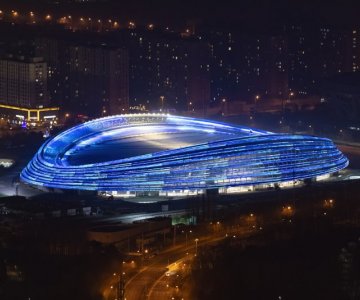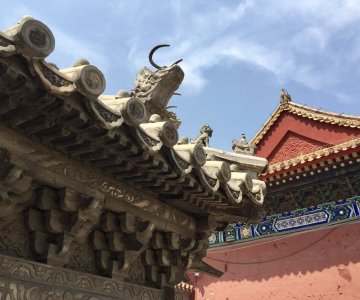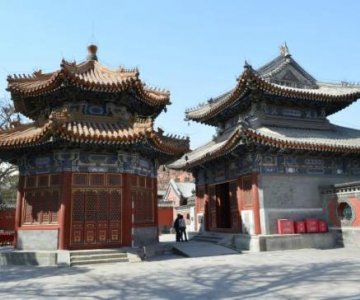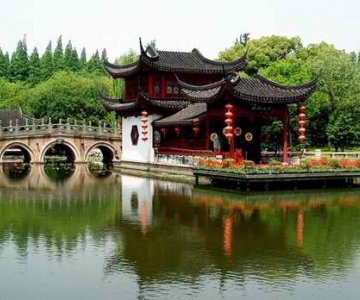National Speed Skating Oval
The premier location for the Beijing 2022 Olympics' speed skating events is more than an arena: its a work of art and a light show at night to boot.
No event here now.
Imperial Ancestral Temple (The Working People's Cultural Palace)
Just to the east of Tiananmen Gate is the entrance to the "Working People's Cultural Palace," also known as the Imperial Ancestral Temple. This is the cheat code version of the Forbidden City: Nearly identical architecture and spaces with 99 percent fewer other humans to share those spaces. If you're slick enough – or your guests aren't paying sufficient attention/still hungover from the night before – you can fool them into thinking they are actually in the Forbidden City proper.
No event here now.
Wanshou Temple
Wanshou Temple or the 'Longevity Temple' was built in 1577 during the Ming dynasty. It is a Buddhist temple where many Chinese Buddhist scriptures are stored. Wanshou Temple is also where the Beijing Art Museum is located. The museum carries a collection of over 70,000 items of culturally significant artworks.
No event here now.
Skewed Tobacco Pouch Street
Know as Yandai Xiejie in Chinese, the Skewed Tobacco Pouch Street is one of the oldest hutongs, which are famous attractions in Beijing.
No event here now.
Tianning Temple
One of the city’s best kept secrets, Tianning Temple is 60-meter-tall pagoda was originally made from wood and in 602AD acted as the depository for treasured Buddhist artifacts on instruction by Emperor Wendi of the Sui dynasty. The now stone structure (having been rebuilt during the Qing dynasty) is adorned with relief sculptures of stone warriors and bodhisattvas, slightly dilapidated and worn, giving them a truly aged quality that is both hard to find and refreshing in country where a substantial number of historical sites have been rebuilt in the past 50 years.
Free entry.
No event here now.
Grand View Garden
Modeled on the grounds described in Dream of the Red Chamber, the park (Daguanyuan in Chinese) makes for a very pleasant afternoon stroll. Although the park is not specifically geared towards children, there is a small enclosure where you can feed deer, cockatoos and a multitude of peacocks. Also fun for kids is a ride in the bridal sedan chair next to the Archway (the white marble gate in the north of the park).
RMB 40, half price for students. Animal enclosure: RMB 5.
No event here now.
Changdian Temple
-
No event here now.
Poly Art Museum
Founded in December 1998, the Poly Art Museum was the first museum to be operated by a state-owned enterprise in the Chinese mainland. The museum aims to develop and display traditional national culture and art, and to rescue and protect Chinese cultural relics lost abroad.
There are two parts to its exhibition: bronze sculptures and stone carvings. Most of the pieces have been retrieved from abroad, and a considerable part of objects on display have high historical and artistic value, representing the last remaining versions in existence.
No event here now.
Duan Qirui Former Government Building
The former headquarters of infamous warlord and Chinese premier Duan Qirui, this early Republican compound now serves as an annex to Renmin University. Worth visiting for the fascinating neo-baroque buildings scattered throughout the grounds and Peanut, a small and quiet cafe near the entrance.
No event here now.
Capital Steel Factory
This is the former location of Shougang Company Ltd, a pig-iron plant originally founded in 1919. It became the largest steel mill in the country, sprawling from the suburbs over 8.56sqm, the size of 2.7 Summer Palaces. At its peak in the 1990s, it had an annual output of 10 million tons and offered “iron rice bowls” to more than 200,000 workers. Nowadays it attracts tourists and photographers for its magnificent displays of urban decay.
No event here now.









